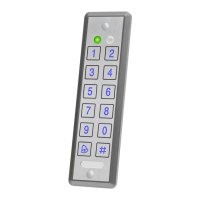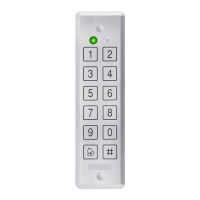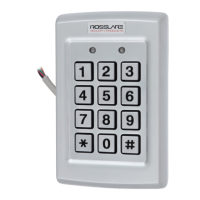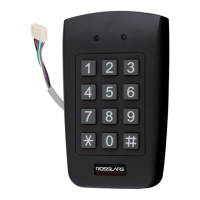Controller Operation
46 AYC-Ex5/T65 Series Installation and Programming Manual
For example, in Auxiliary Mode 4, the controller is capable of
bypassing an alarm zone by shunting an alarm system’s door
sensor. The auxiliary output is to be wired in parallel to the door
sensor output. When in use, the auxiliary output is normally open
and the door sensor functions normally. When a valid code is
entered, the auxiliary relay shunts the door sensor for the duration
of the shunt time, as defined by the auxiliary setting. If the door is
left open longer than the shunt time, an alarm is triggered.
4.9.9.6 Auxiliary Mode 5
Auxiliary input function: Door Monitor
Auxiliary output activated by: Shunt (explanation below)
For example, in Auxiliary Mode 5, the controller is capable of
shunting an alarm system. In this mode, the auxiliary input is to be
wired to the magnetic contact switch on the door. The auxiliary
relay is wired to the alarm system. Without a valid code entered, the
auxiliary relay matches the condition of the magnetic contact
switch; if the door opens, the auxiliary relay opens; if the door
closes, the auxiliary relay closes. When a valid code is entered, a
countdown for maximum shunt time, as defined by the auxiliary
setting, begins; if the door is not closed before the maximum shunt
time, the alarm is triggered.
4.9.9.7 Auxiliary Mode 6
Auxiliary input function: Door Monitor
Auxiliary output activated by: Forced entry
For example, in Auxiliary Mode 6, the controller can trigger the
auxiliary relay if the door has been forced. If the siren settings are
enabled, the siren is activated.
In this mode, the auxiliary input functions as a door monitor switch
and is wired to the magnetic contact switch on the door. The
auxiliary relay is to be wired to the alarm system. If the door is
forced open, the controller waits for the period of the forced door
delay time to elapse and then it activates the auxiliary relay. The
auxiliary setting sets the forced door delay period.

